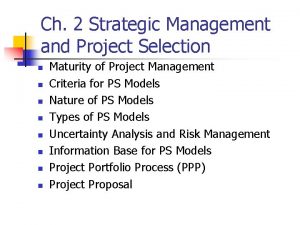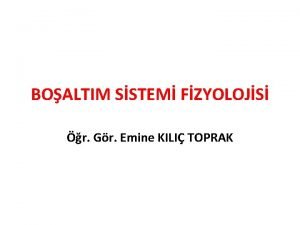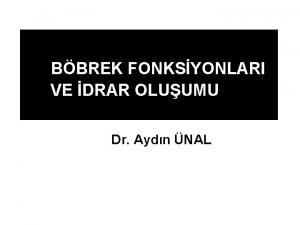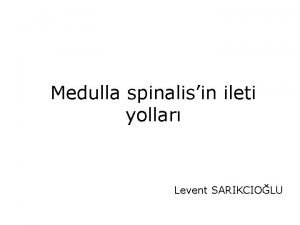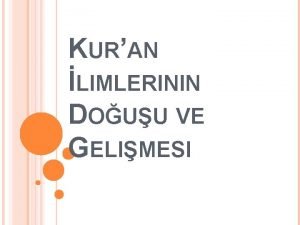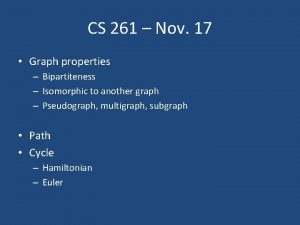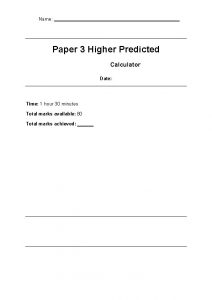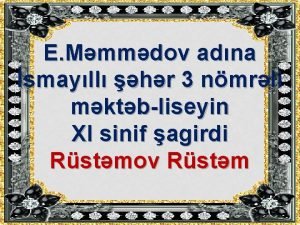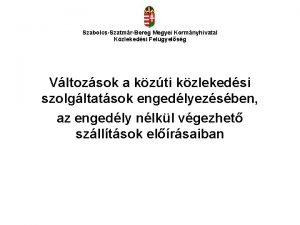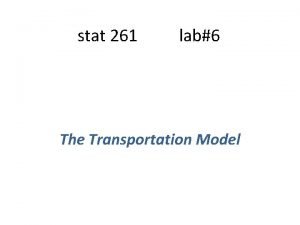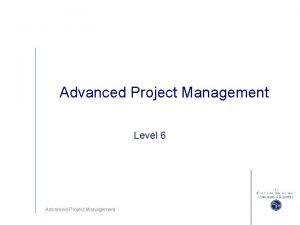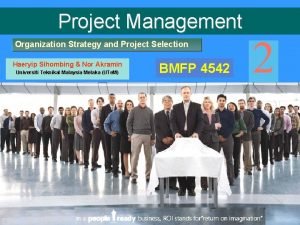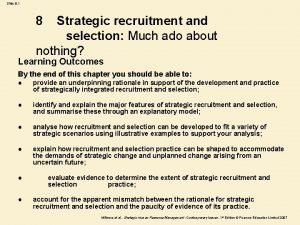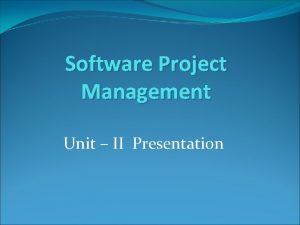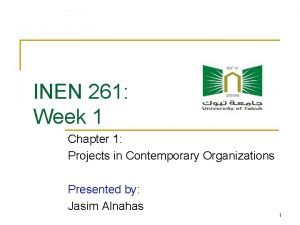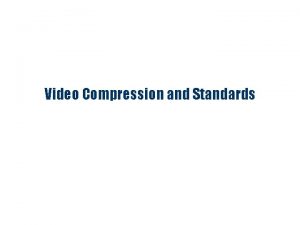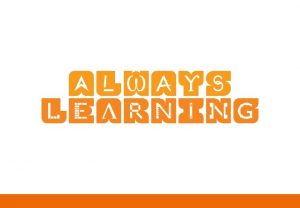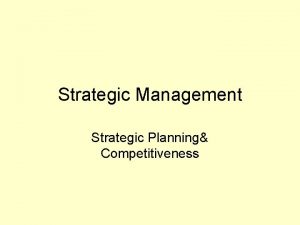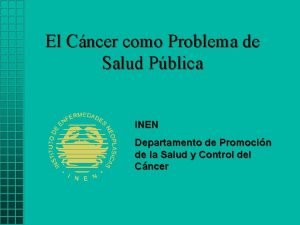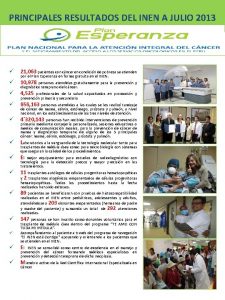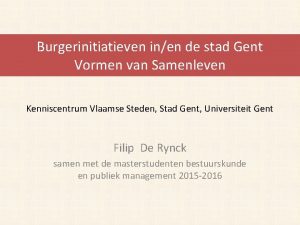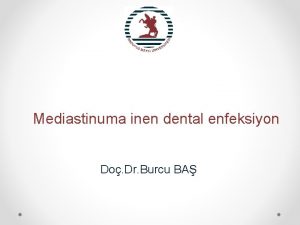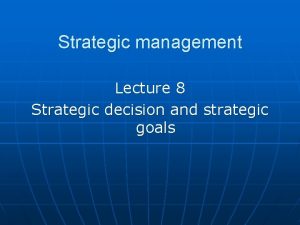INEN 261 Week Strategic Management and Project Selection































- Slides: 31

INEN 261: Week Strategic Management and Project Selection Presented by: Jasim Alnahas

What did we learn in Chapter 1 n n A Project is a temporary endeavor undertaken to create a unique product, service or result. The three prime objectives of project management are: 1. To meet specified performance 2. To do it within specified costs 3. Complete on schedule n 2 -2 Projects are characterized by a singleness of purpose, a definite life cycle, complex interdependencies, some or all unique elements, and an environment of conflict

What did we learn in Chapter 1 (continued) n n 2 -3 Projects often start slow, build up speed while using considerable resources, and then slow down as completion nears As progress is made on a project, there becomes less uncertainty in what the final deliverable will achieve in meeting project goals

Chapter Learning Outcomes If you complete the given assignments for this Chapter you will: n n 2 -4 Understand Criterions used for project selection Understand decision-aiding models and their types Be able to use a selection criteria to select a model Understand how uncertainty is handled

Before we can talk about how to manage a Project, the Project has to be commissioned n n 2 -5 The commissioning process takes the form of project approval In large, complex organizations this approval forces a selection among several potential ideas

Project Selection n Project selection is the process of evaluating individual projects or groups of projects, and then choosing to implement some set of them so that the objectives of the parent organization will be achieved Managers often use decision-aiding models(Validation, Assessment, and Related Issues for Policy Analysis) to extract the relevant issues of a problem from the details in which the problem is embedded Models represent the problem’s structure and can be useful in selecting and evaluating projects 2 -6

n Criteria for Project Selection Realism - reality of manager’s decision Models n Capability- able to simulate different scenarios and optimize the decision n Flexibility - provide valid results within the range of conditions n Ease of Use - reasonably convenient, easy execution, and easily understood n Cost - Data gathering and modeling costs should be low relative to the cost of the project n Easy Computerization - must be easy and convenient to gather, store and manipulate data in the model 2 -7

Nature of Project Selection Models n 2 Basic Types of Models q q n Two Critical Facts: q q 2 -8 Numeric Nonnumeric Models do not make decisions – They only aid the people who do All models, however sophisticated, are only partial representations of the reality the are meant to reflect

Projects selected should support the organizational strategy of the enterprise n n n 2 -9 What are the objectives of the enterprise? How are the individual objectives weighted? How relatively important are they to the organizational goal? How will the project contribute to the objectives?

Nonnumeric Models for selecting projects n Sacred Cow - project is suggested by a senior and powerful official in the organization n Operating Necessity - the project is required to keep the system running n Competitive Necessity - project is necessary to sustain a competitive position 2 -10

Nonnumeric Models n Product Line Extension - projects are judged on how they fit with current product line, fill a gap, strengthen a weak link, or extend the line in a new desirable way. n Comparative Benefit Model - several projects are considered and the one with the most benefit to the firm is selected 2 -11

Numeric Models: Profit/Profitability Payback period - initial fixed Investment/estimated n annual cash inflows from the project. n q How long does it take to get your investment back? q Choose the shortest paybacks Discounted Cash Flow - Present Value Method (NPV) q What is the net present value at some interest rate? q Choose the highest present value 2 -12

Numeric Models continued n n Internal Rate of Return - Finds rate of return that equates present value of inflows and outflows q Solves for interest which makes expenses = to revenues q Choose the highest rate Profitability Index (or Benefit Cost ratio) - NPV of all future expected cash flows/initial cash investment q Divide the benefits by the costs q Choose the highest 2 -13

All the numeric selection models discussed up to now use dollars or Riyals as the only metric n Payback Period n Discounted Cash Flow n Internal Rate of Return n Benefit Cost ratios Corporate goals and objectives use metrics other than money Project Selection processes should too 2 -14

Possible measures of effectiveness other than money n n n 2 -15 Environmental impacts Safety Time required to complete Impact on the present organization Perceived impact on organizational image You need other ways to evaluate potential projects against these measures: Scoring techniques

Numeric Models: Scoring n Unweighted 0 -1 Factor Model n Unweighted Factor Scoring Model n Weighted Factor Scoring Model n Constrained Weighted Factor Scoring Model n Goal Programming with Multiple Objectives 2 -16

Unweighted 0 -1 Model n Develop a list of relevant factors for the potential project q q q n n 2 -17 No increase in energy requirements Impact on environmental standards Time to complete less than 3 years Score each project on whether it qualifies (meets) or does not qualify Select the projects with the larger scores

Applying the Unweighted 0 -1 Model Evaluation Factor Project A Project B Project C Increased Energy? (Yes=0, No =1) 0 1 1 Environmental impact? (Low=1, High=0) 1 1 0 Complete within 3 years? (Yes=1, No=0) 1 1 1 2 3 2 Total 2 -18

Unweighted Factor Scoring Model n Instead of meets or fails (0 or 1) score on the basis of some scale q q q n 2 -19 Qualifies totally = 3 Qualifies nearly = 2 Does not qualify = 1 Sum the scores and compare projects on the basis of highest scores

Applying the Unweighted Factor Scoring Model Evaluation Factor Project A Project B Project C Increased Energy? (Alot=1, Little =2, None=3) 2 3 2 Environmental impact? (None=3 Low=2, High=1) 3 2 2 Complete within 3 years? (3 yrs or less=3, 4 yrs=2, >4 yrs=1) 3 3 2 8 8 6 Total 2 -20

Weighted factor scoring n n 2 -21 Not all criteria are weighted equally Criteria 1 is most important (40% weight) Criteria 2, 3 and 4 are less important (20% weight each) Multiply the score times the weight to get a weighted score for each project

Applying the Weighted Factor Scoring Model Evaluation Factor Increased Energy? (Alot=1, Little =2, None=3) (50%) Project A Project B Project C 2 x. 5 =1 3 x. 5 =1. 5 2 x. 5 =1 Environmental impact? (None=3 Low=2, High=1) (25%) 3 x. 25 =. 75 Complete within 3 years? (3 yrs or less=3, 4 yrs=2, >4 yrs=1) (25%) 3 x. 25 =. 75 2 x. 25 =. 5 2. 75 2. 0 Total 2 -22 2 x. 25 =. 5 2 x. 25=. 5

Constrained Weighted Factor Scoring Models n n n You have multiple criteria but have to score within some range of one or more of them to be considered One or more criteria score may take the project out of the competition Example: q 2 -23 Air quality impacts exceed some institutional standard

Applying the Constrained Weighted Factor Scoring Model Evaluation Factor Increased Energy? (A lot=1, Little =2, None=3) (50%) Project A Project B Project C 2 x. 5 =1 3 x. 5 =1. 5 2 x. 5 =1 Environmental impact? (None=3 Low=2, High=1) (25%) 3 x. 25 =. 75 Complete within 3 years? (3 yrs or less=3, 4 yrs=2, >4 yrs=1) (25%) 3 x. 25 =. 75 2 x. 25 =. 5 2. 75 2. 0 Total 2 -24 2 x. 25 =. 5 2 x. 25=. 5 Project must be completed within 3 years

Risk Versus Uncertainty n n n Risk - when the decision maker knows the probability of each and every state of nature and thus each and every outcome. An expected value of each alternative action can be determined Uncertainty - when a decision maker has information that is not complete and therefore cannot determine the expected value of each alternative We try to turn uncertainty into risk by estimating probabilities of uncertainty 2 -25

Risk Analysis n n Principal contribution of risk analysis is to focus the attention on understanding the nature and extent of the uncertainty associated with some variables used in a decision making process. (Just trying to think about the uncertainty improves the quality of project selection) 2 -26

Risk Analysis in Project Selection n Probability distributions are determined or subjectively estimated for each of the “uncertain” variables The probability distribution for the rate of return (or net present value, or any other evaluation score) can then be found by simulation or mathematical methods Both the expected value (the mean score) and its variability are important criteria in the evaluation of a project 2 -27

Consider these 3 projects: Which would you choose? Project 3 has lowest expected cost but greatest probability of exceeding 15 2 -28 Project 1 has highest expected cost but smallest probability of exceeding 15

Comments on the Information Bases for Project Selections n Accounting Data q n Rich historical source to be used carefully in decision making Other Measurements of effectiveness q Subjective vs. Objective n 2 -29 Careful use of subjective info may be better than misunderstood use of objective info

Summary of Chapter 2 n n n Primary selection criteria are realism, capability, flexibility, ease of use, and cost In preparing to use a model, a firm must identify its objectives, weighting them relative to each other, and determining the probable impacts of the project on the firm’s competitive abilities. Models can be numeric or nonnumeric 2 -30

Summary (continued) n Numeric Models can be subdivided into profitability and scoring models n To handle uncertainty, pro forma documents, risk analysis, and simulation with sensitivity analysis are helpful n Special care should be given to data in project selection models. Of concern are data taken from accounting data base. 2 -31
 Strategic management and project selection
Strategic management and project selection Strategic management and project selection
Strategic management and project selection Henlenin inen kolu
Henlenin inen kolu Zıt akım çoğaltıcı sistem
Zıt akım çoğaltıcı sistem Columna renalis
Columna renalis Decussatio lemniscorum
Decussatio lemniscorum Içkinin haram kılınma aşamalarını anlatan ayetler
Içkinin haram kılınma aşamalarını anlatan ayetler Industrial organization model of above average returns
Industrial organization model of above average returns Strategic analysis and choice in strategic management
Strategic analysis and choice in strategic management Week by week plans for documenting children's development
Week by week plans for documenting children's development Project selection and portfolio management
Project selection and portfolio management Simplified scoring model in project management
Simplified scoring model in project management Bcbs 261
Bcbs 261 Tp 261
Tp 261 Texas family code 261
Texas family code 261 Detrusor leak point pressure
Detrusor leak point pressure Cs 261
Cs 261 180-116 calculator
180-116 calculator Emt 261
Emt 261 261 sayli mekteb google map
261 sayli mekteb google map Fuvarozói szakmai irányító
Fuvarozói szakmai irányító Stat 261
Stat 261 Importance of software project management
Importance of software project management Project context
Project context Strategic planning and project management
Strategic planning and project management Two way selection and multiway selection in c
Two way selection and multiway selection in c Multiway selection
Multiway selection Mass selection
Mass selection Project portfolio matrix
Project portfolio matrix Strategic selection process
Strategic selection process Strategic assessment in spm
Strategic assessment in spm Software project evaluation
Software project evaluation

